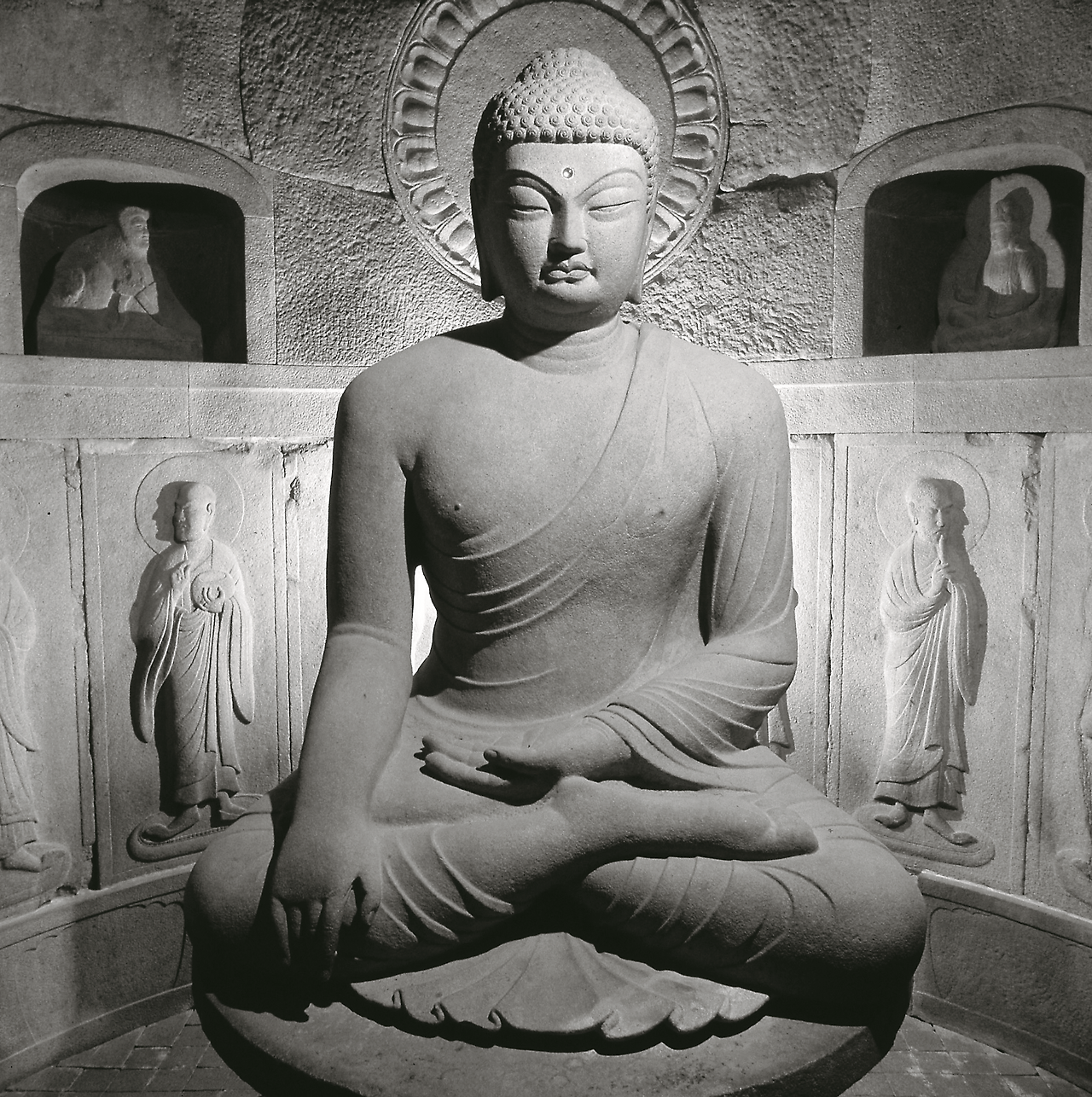Stories of Korea’s National Treasures 24

Photo Credit : Cultural Heritage Administration of Korea
Seokguram Grotto
(Gyeongju, Gyeongsangbuk-do)
🏯 1. A Stone Temple Born from Devotion
High on the slopes of Mount Toham in Gyeongju stands Seokguram Grotto, a masterpiece of spiritual architecture and one of the crowning achievements of the Unified Silla period. Built in the 8th century during the reign of King Gyeongdeok, the grotto was constructed by Kim Daeseong, a devoted statesman who dedicated it to his parents — Bulguksa Temple for his parents in this life, and Seokguram for his parents in the afterlife. The grotto represents the universe in stone, where every curve, pillar, and sculpture follows a sacred design inspired by Buddhist cosmology.
🪨 2. The Architecture of Perfection
Seokguram is not carved directly into the mountain; it is an artificial stone temple, built from precisely cut granite blocks assembled without mortar — a rare engineering marvel of the ancient world. At its heart sits a serene seated Buddha, facing east toward the rising sun over the East Sea, symbolizing enlightenment awakening over darkness. Surrounding the Buddha are Bodhisattvas, heavenly guardians, and disciples, arranged in perfect symmetry to mirror the cosmic order. The circular dome above, formed by interlocking stone rings, represents the celestial sphere of nirvana.
🌄 3. Harmony of Art and Faith
Seokguram Grotto unites science, art, and faith into one harmonious vision. The balance of light and shadow, the natural humidity control, and the mathematical precision of its structure all reveal the advanced knowledge and devotion of the Silla people. Standing before the main Buddha, one feels not mere admiration but stillness — as if time itself pauses to breathe.
🌿 4. Preservation and Legacy
For over a millennium, Seokguram has endured countless storms and restorations. Despite challenges, it continues to radiate a quiet, sacred beauty that transcends centuries. In 1995, Seokguram Grotto, together with Bulguksa Temple, was inscribed as a UNESCO World Heritage Site for its artistic and spiritual significance. Today, it remains a place of pilgrimage, contemplation, and a symbol of the Korean spirit of harmony between faith and craftsmanship.
💬 5. A Warm Reflection
“In the stillness of Seokguram, stone becomes breath, and silence becomes prayer. It teaches us that enlightenment is not found in distance, but in depth — within the heart that sees light in stillness.”
📌 Notice
The National Treasure number indicates the order of designation, not a ranking of value.
For more information, please visit the 👉National Heritage Portal